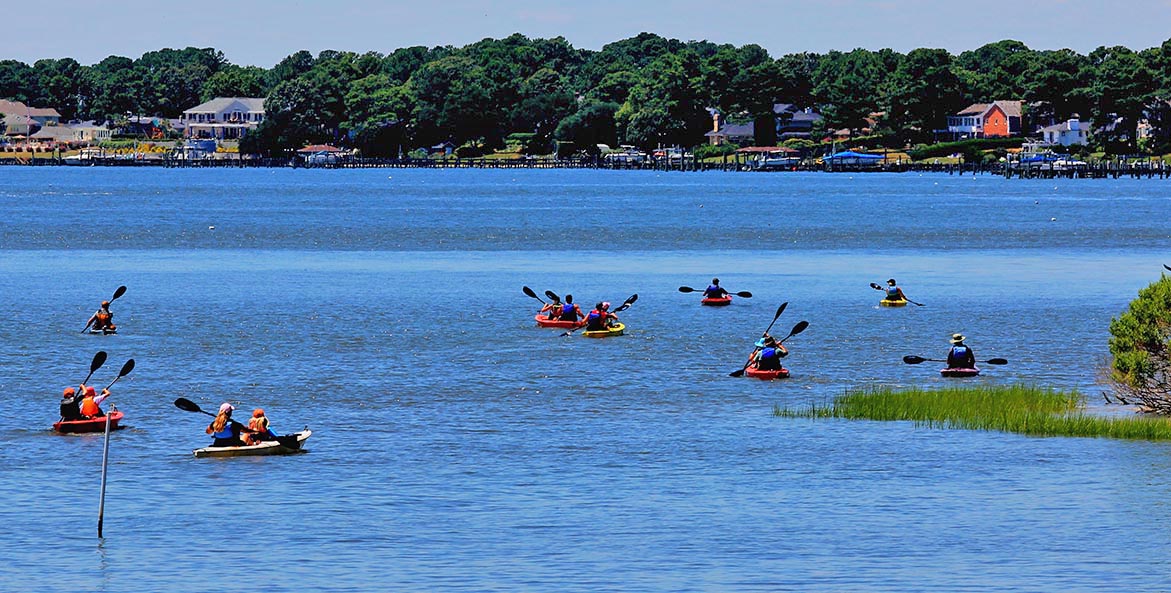As the nation’s largest estuary and home to abundant wildlife and cultural diversity, the Chesapeake Bay is without question nationally significant. The Bay holds a special place in our hearts as well as our region’s unique history and culture. Now, thanks to draft legislation, the Chesapeake Bay may finally get the national recognition that lawmakers and environmental groups in the region have been seeking for decades.
Senator Chris Van Hollen (D-Md.) and Representative John Sarbanes (D-Md.) recently released a draft bill that would establish the Chesapeake National Recreation Area (CNRA). A recreation area is a National Park Service designation that promotes greater public access and recreation, such as fishing, paddling, and more. The designation would also bring more federal resources and attention to the Chesapeake Bay and the challenges it faces.
The CNRA would string together a collection of public lands and parks along the Bay that help tell the stories of the Bay’s ecosystem and restoration efforts, history, and cultural diversity. Most importantly, the designation would do four things that would benefit everyone who loves the Bay:
1. Improve Public Access
The Chesapeake Bay boasts more than 11,000 miles of shoreline—that’s more than the entire U.S. West Coast! Unfortunately, much of it is privately owned. In Maryland’s Anne Arundel County alone, there are more than 500 miles of shoreline and nearly 80 beaches, but only a few are open for public use. Creating the CNRA would increase both the quantity and quality of public access sites around the Bay, creating connections between the people and the waterway and wildlife. Community access to natural areas and outdoor recreation improves public health, quality of life, and builds a sense of place and shared responsibility .
2. Inspire the Next Generation of Bay-Savers
The CNRA will open the door for more outdoor experiences on the Bay to educate and engage the next generation of stewards and environmental leaders. Appreciation for the Bay is built through fond memories, whether paddling, fishing, or learning about aquatic critters. These experiences and hands-on education opportunities are key to ensuring that our children and grandchildren have the resources and commitment to address excess pollution, climate change, development, and protection of the region’s diverse plants and animals .
3. Share Stories of Diverse Chesapeake History
Much of our nation’s deep and complicated history lies within the Chesapeake region, from the founding of our nation’s capital on the Potomac River to Harriet Tubman’s valiant journeys to freedom. The CNRA would elevate these stories that often go untold, including the story of the Indigenous peoples of the Chesapeake region whose history goes back more than 12,000 years and whose land was taken from them, often violently. Long-time and careful stewards of the natural world, tribe leaders in the Chesapeake support the CNRA designation and the new opportunities it would bring to share their ancestral connections to the land, water, and history of the Bay.
The CNRA would string together a collection of public properties and places of interest that tell the narrative of the region’s culture and history. One such site is the Burtis House, a 19th century home once used by Captain Burtis to rent out fishing equipment in the 1890s. This historic waterfront building, one of the oldest in downtown Annapolis, Maryland, highlights the Chesapeake’s maritime heritage and the importance of our watermen and women.
As the CNRA makes its way to Congress, lawmakers and partners are working to continually identify new sites to be linked by the National Park designation. Inclusion of sites is voluntary and will not impose any additional regulations or federal authority. Rather, the CNRA will utilize the expertise and brand of the National Parks Service to elevate these key sites around the Bay.
4. Encourage Community Engagement
Senator Van Hollen, Representative Sarbanes, and environmental advocates from around the watershed want to hear from you! The designation of the CNRA aims to bring the beauty and history of the Chesapeake Bay to residents from all backgrounds. To ensure this piece of legislation accomplishes that, the CNRA draft bill text is available for public comment until March 13.




